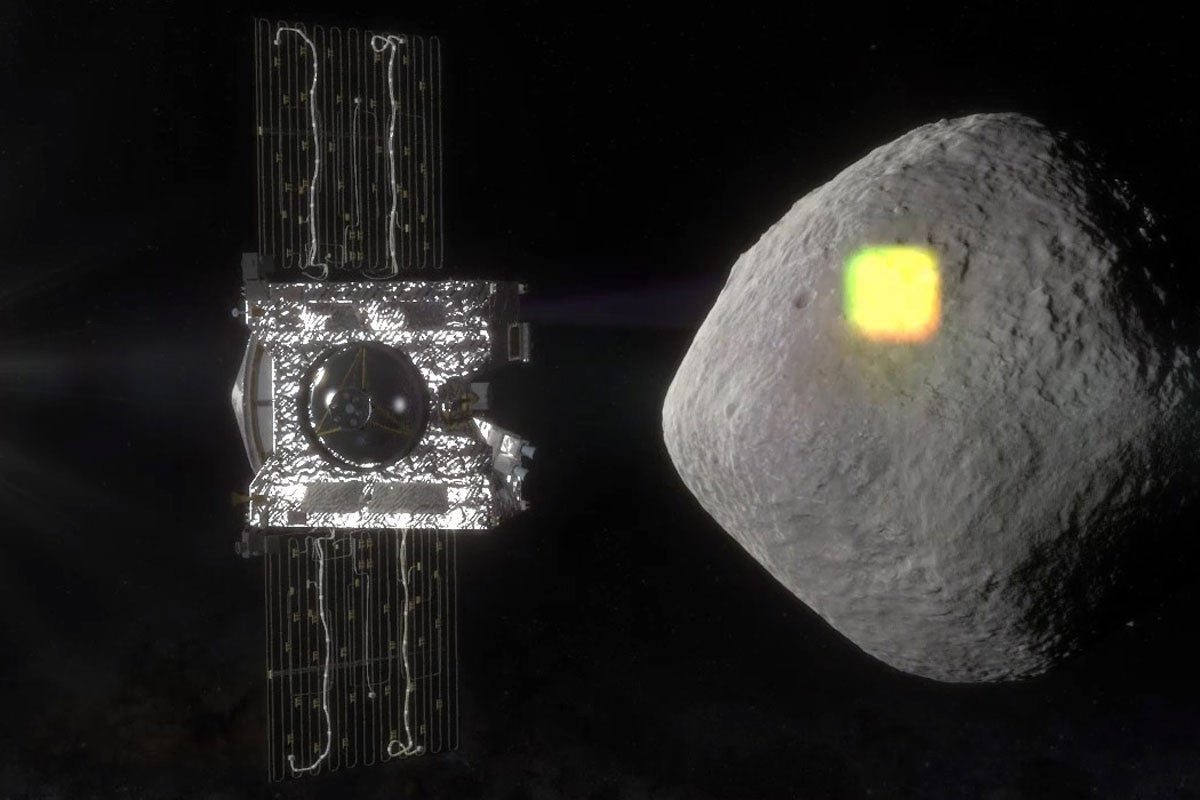It’s been seven years since NASA’s OSIRIS-REx spacecraft launched from Cape Canaveral aboard an Atlas rocket, bound for an asteroid 200 million miles from Earth.
The unmanned spacecraft was tasked with rendezvousing with asteroid Bennu to retrieve a sample from its surface and return it to Earth — a first-of-its-kind mission for the United States.
That’s expected to happen on Sept. 24, when OSIRIS-REx will jettison a sample capsule containing loose rocks and soil from Bennu that — if all goes according to plan — will deploy parachutes and touch down in the Utah Test and Training Range.
Watch a livestream of the Osiris-REx sample return on Sept. 24 around 10:55 a.m. EST.
A lot has happened between the launch in September 2016 and the upcoming release of the sample capsule. After reaching Bennu in December 2018, the spacecraft spent nearly two years orbiting the asteroid while mapping and studying its rugged surface.
That detailed mapping was a crucial step, allowing members of the OSIRIS-REx team back on our home planet to study images and spectral observations of Bennu to find the best location to sample without endangering the spacecraft.
Among the members of the OSIRIS-REx team are three UCF scientists: Humberto Campins, a Pegasus Professor of physics and international asteroid expert; Associate Professor of Physics Yan Fernandez, who researches comets and asteroids; and Associate Professor of Physics Kerri Donaldson Hanna, a planetary geologist.
They helped select the sampling site on Bennu and have continued to interpret scientific data from the spacecraft to understand the asteroid’s composition.
“We were surprised in many ways,” Campins says. “All the information that we had before we went to Bennu suggested that once we got there, we should have nice flat areas that were mostly sand or pebbles that the spacecraft could come down safely and sample without any risk of hitting a rock. When we got there what we found was that most of the surface was rocky.”
After careful planning, on Oct. 20, 2020, OSIRIS-REx executed a complicated touch-and-go maneuver during which a robotic arm unfurled, touched the surface of the asteroid and collected roughly 250 grams of the long-sought sample of rocks and dust.
The plan went flawlessly, and OSIRIS-REx departed Bennu in May 2021 on its 2.5-year journey back toward Earth.
“I feel incredibly lucky to have been one of the first people in the world to see the spacecraft observations of asteroid Bennu and then one of the first to see and work with the sample,” Hanna says. “Studies of this sample will tell us about how asteroid Bennu formed from its parent body and evolved into what we see today and will provide us key details on how the Earth’s atmosphere and weather alters meteorites before we collect them and study them on Earth.”
Fernandez says he’s excited for the return of a sample from Bennu.
“Having a sample from a primitive asteroid, and from a location we were able to study well ahead of time — so we know the geologic context of the sample — is really important for testing our ideas about solar system formation and evolution,” he says.
NASA tested a replica of the sample capsule landing in August. When the actual capsule is released from the OSIRIS-REx spacecraft, it will enter Earth’s atmosphere at more than 27,000 mph before deploying parachutes to slow its descent.
That sample recovery will be the culmination of OSIRIS-REx’s seven-year mission — and the beginning of a new one. OSIRIS-REx will be redirected to the asteroid Apophis with a new mission name: OSIRIS-APEX. It’s expected to reach Apophis in 2029.




